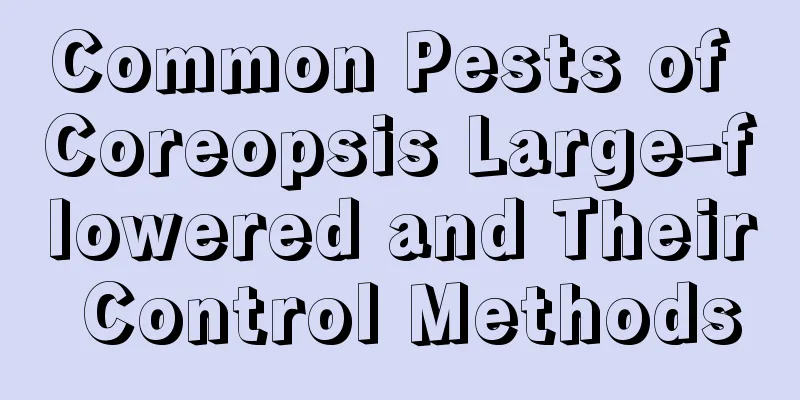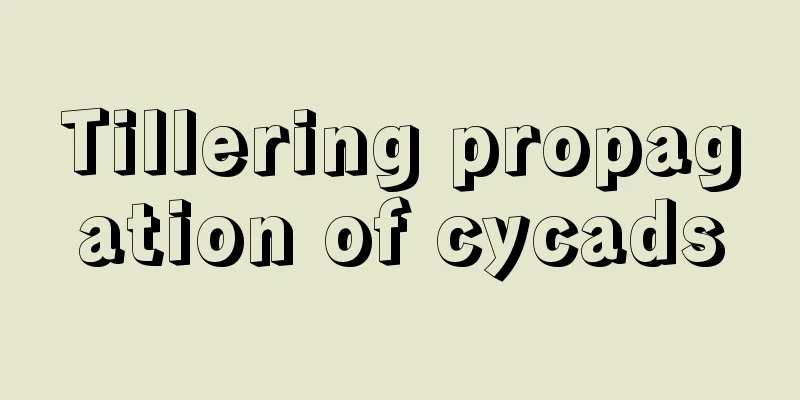Common Pests of Coreopsis Large-flowered and Their Control Methods

Common pests of Coreopsis: aphidsPest symptomsThey usually concentrate on sucking sap from tender buds, leaves and branches, causing the affected parts of the plant to shrink and deform. Aphids also secrete honeydew that contaminates the plants and induces diseases such as sooty mold. Prevention and treatment methodsYou can use 600-800 times diluted Wanling or 800-1000 times diluted 25% fish vine oil Suposha for spraying. Suposha is a broad-spectrum organophosphorus insecticide with contact and stomach poison effects and strong penetration. It can penetrate into plant tissues and has a good control effect on chewing and piercing-sucking mouthparts pests. Spray once a week for 2-3 times in a row. Common pests of Coreopsis grandiflora: cutwormsPest symptomsIn early spring, the damage to roots and buds is particularly severe in sandy soil. Some of the damage is done by biting off the rhizomes on the ground, while others eat the sprouts from underground, causing the death of large numbers of plants. The large-flowered coreopsis likes sandy soil the most, so there are more cutworms, so flower lovers should pay more attention. Prevention and treatment methodsIn addition to the commonly used venom trapping, furadan granules can be applied in ditches or holes, with a dosage of 1500-2000 grams per mu. This drug has a long residual effect and can prevent harm 7-8 weeks after application. Common pests of Coreopsis grandiflora: grubsPest symptomsWhite grubs are the larvae of scarab beetles, also known as white earth silkworms and walnut worms. The adult is commonly known as the scarab beetle or scarab beetle. Harms many plants and vegetables. According to their feeding habits, they can be divided into three categories: herbivorous, coprophagous, and saprophagous. Among them, the herbivorous grubs have a wide range of diets and harm a variety of crops, cash crops and flower seedlings. They like to eat newly planted seeds, roots, tubers and seedlings. They are global underground pests and are very harmful. The common method of propagation for Coreopsis grandiflora is sowing. After the seedlings grow out, pay attention to observe them to prevent white grubs from gnawing on the stems of the seedlings. Prevention and treatment methodsThe occurrence of white grubs is serious, and proper adjustment of crop rotation can significantly reduce the damage. Apply fertilizers reasonably and make sure the farmyard manure is fully decomposed to avoid bringing larvae and eggs into the vegetable fields. It can also promote the healthy growth of crops and enhance their resistance to pests. At the same time, white grubs like to eat decomposed farmyard manure, which can reduce their damage. Mix seeds with 50% chlorpyrifos emulsifiable concentrate, the ratio of chlorpyrifos, water and seeds is 1:50:600. Take precautions before they happen. |
<<: Pests of Dianthus and their control methods
>>: Echinacea Pests and Control Methods
Recommend
How to prune Verbena
When to prune Verbena Verbena is usually heavily ...
What flowers can be watered with orange juice? Can it be used to water green radish?
1. What flowers can be watered with orange juice?...
Is it okay to put freesia in the bedroom?
1. Is it good? Freesia has a special fragrance th...
How to save seeds of Million Bells
Million Bells Seed Introduction Million bells hav...
The growing environment and local conditions of hyacinth
Hyacinthus growth environment and conditions Hyac...
Can redwood fragrance be potted?
Can redwood fragrance be potted? Rosewood can be ...
Which flowers can be watered with aspirin and how much water should be added?
The effect of aspirin mixed with water on flowers...
How much do you know about succulent pots?
1. We must first understand the growth habits of ...
Rubber tree cultivation methods and precautions
1. Flower Pot Requirements for flower pot quality...
Is the rubber tree poisonous?
1. Is it toxic? It is indeed poisonous, and its l...
Is it better to use a large or small pot for asparagus fern?
Is it better to use a large or small pot for aspa...
How to plant daffodils? Planting time and method
Daffodil planting time The planting season for da...
How long does it take for roses to acclimate?
Rose acclimatization time If the roses are proper...
When and how to plant herbs
Herb Planting Time If you want vanilla to grow vi...
How to keep radish seeds and how to collect seeds
How to save radish seeds Radish seeds come from i...









